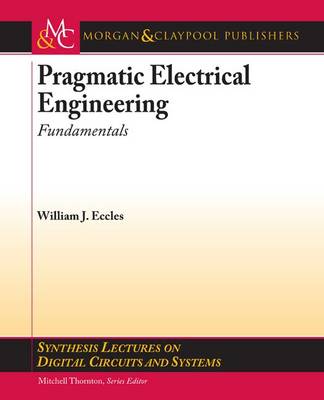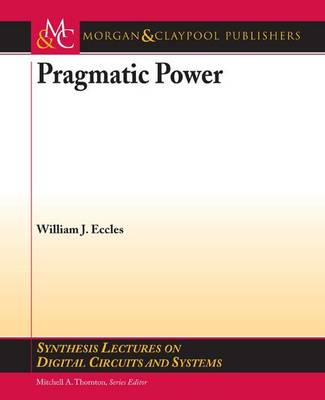Synthesis Lectures on Digital Circuits and Systems
2 total works
Pragmatic Electrical Engineering: Fundamentals introduces the fundamentals of the energy-delivery part of electrical systems. It begins with a study of basic electrical circuits and then focuses on electrical power. Three-phase power systems, transformers, induction motors, and magnetics are the major topics.
All of the material in the text is illustrated with completely-worked examples to guide the student to a better understanding of the topics. This short lecture book will be of use at any level of engineering, not just electrical. Its goal is to provide the practicing engineer with a practical, applied look at the energy side of electrical systems. The author's ""pragmatic"" and applied style gives a unique and helpful ""non-idealistic, practical, opinionated"" introduction to the topic.
All of the material in the text is illustrated with completely-worked examples to guide the student to a better understanding of the topics. This short lecture book will be of use at any level of engineering, not just electrical. Its goal is to provide the practicing engineer with a practical, applied look at the energy side of electrical systems. The author's ""pragmatic"" and applied style gives a unique and helpful ""non-idealistic, practical, opinionated"" introduction to the topic.
Pragmatic Power is focused on just three aspects of the AC electrical power system that supplies and moves the vast majority of electrical energy nearly everywhere in the world: three-phase power systems, transformers, and induction motors. The reader needs to have had an introduction to electrical circuits and AC power, although the text begins with a review of the basics of AC power. Balanced three-phase systems are studied by developing their single-phase equivalents. The study includes a look at how the cost of ""power"" is affected by reactive power and power factor. Transformers are considered as a circuit element in a power system, one that can be reasonably modeled to simplify system analysis. Induction motors are presented as the most common way to change electrical energy into rotational energy. Examples include the correct selection of an induction motor for a particular rotating load. All of these topics include completely worked examples to aid the reader in understanding how to apply what has been learned.
This short lecture book will be of use to students at any level of engineering, not just electrical, because it is intended for the practicing engineer or scientist looking for a practical, applied introduction to AC power systems. The author's ""pragmatic"" and applied style gives a unique and helpful ""nonidealistic, practical, and opinionated"" introduction to the topic.
This short lecture book will be of use to students at any level of engineering, not just electrical, because it is intended for the practicing engineer or scientist looking for a practical, applied introduction to AC power systems. The author's ""pragmatic"" and applied style gives a unique and helpful ""nonidealistic, practical, and opinionated"" introduction to the topic.

